

American RadioWorks. In This Documentary An American way of teaching In 1993, a group of researchers set out to do something that had never been done before.
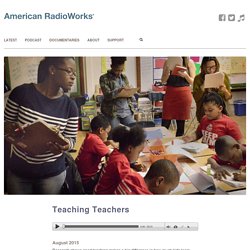
They would hire a videographer to travel across the United States and record a random sample of eighth-grade math classes. What they found revealed a lot about American teaching. Rethinking teacher preparation In the United States, teaching isn't treated as a profession that requires extensive training like law or medicine. Teaching is seen as something you can figure out on your own, if you have a natural gift for it. Resources Full transcript of radio program Credits. Started from the Bottom. 50 Books Every Black Teen Should Read. At NewsOne, we believe that the child who reads is the child who leads.
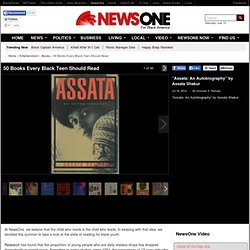
In keeping with that idea, we decided this summer to take a look at the state of reading for black youth. Research has found that the proportion of young people who are daily readers drops has dropped dramatically in recent years. The significance of plot without conflict - still eating oranges. Flipagram - Bring Moments to Life! Create short video stories from your photos, set to music you love!
Artful storytelling. World War I in Photos: A Century Later. The significance of plot without conflict - still eating oranges. The significance of plot without conflict - still eating oranges. Periodic Table of Storytelling. Kurt Vonnegut on the Shapes of Stories. A Story. Li-Young Lee was born in 1957 in Jakarta, Indonesia, to Chinese parents.
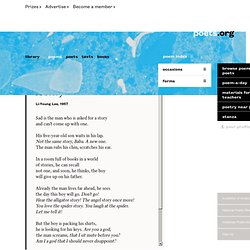
His father had been a personal physician to Mao Zedong while in China, and relocated the family to Indonesia, where he helped found Gamaliel University. In 1959, the Lee family fled the country to escape anti-Chinese sentiment and after a five-year trek through Hong Kong, Macau, and Japan, they settled in the United States in 1964. Lee attended the Universities of Pittsburgh and Arizona, and the State University of New York at Brockport. He has taught at several universities, including Northwestern and the University of Iowa. He is the author of The Winged Seed: A Remembrance (Simon & Schuster, 1995); Behind My Eyes (W.W.
His other work includes Breaking the Alabaster Jar: Conversations with Li-Young Lee (Edited by Earl G. Make Your Images Interactive - ThingLink. Story Maps. "The Human Voice" from StoryCorps. A Black Girl’s Encounter With The Prison Industrial Complex. Pretty Sparkly Things: A Black Girl’s Encounter With The Prison Industrial Complex by Tanisha C.
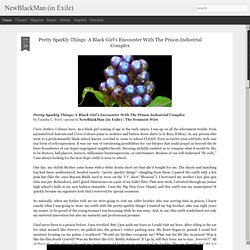
Ford | special to NewBlackMan (in Exile) | The Feminist Wire I love clothes. I always have. As a black girl coming of age in the early 1990s, I was up on all the adornment trends: from asymmetrical haircuts and Cross Colours jeans to neckties and button down shirts (a la Boyz II Men). One day, my stylish Mother came home with a white denim short set that she’d bought for me. Why Stories Matter - Marshall Ganz. I grew up in Bakersfield, California, where my father was a rabbi and my mother was a teacher.

I went to Harvard in 1960, in part because it was about as far as I could get from Bakersfield, which was the terminus of the dust bowl migration that John Steinbeck made famous in The Grapes of Wrath. I got my real education, however, when I left Harvard to work in the civil rights movement in Mississippi. I went to Mississippi because, among other things, my father had served as an Army chaplain in Germany right after World War II. Artist Mickalene Thomas on Her Film Happy Birthday to a Beautiful Woman, Her Mother, and Creativity.
Sandra BushPhoto: © Mickalene Thomas and Mickalene Thomas Studio, Inc. 2013 I first met Mickalene Thomas at Jay Z’s video shoot for Picasso Baby in July 2013.

Ta-Nehisi Coates and the boundaries of legitimate debate. At the Sixth and I synagogue in Washington on Thursday night, people were reselling tickets out on the street as if a playoff game was taking place inside, rather than a talk by Ta-Nehisi Coates, a national correspondent for the Atlantic.
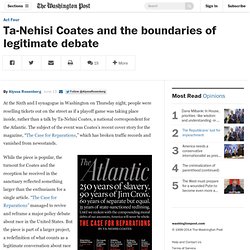
The subject of the event was Coates’s recent cover story for the magazine, “The Case for Reparations,” which has broken traffic records and vanished from newsstands. Voices from the Days of Slavery - Faces and Voices from the Presentation (American Memory from the Library of Congress) Approximately four million Americans enslaved in the United States were freed at the conclusion of the American Civil War.
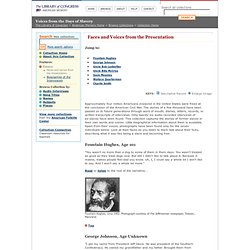
The stories of a few thousand have been passed on to future generations through word of mouth, diaries, letters, records, or written transcripts of interviews. Only twenty-six audio-recorded interviews of ex-slaves have been found. This collection captures the stories of former slaves in their own words and voices. Little biographical information about them is available. Apart from their voices, photographs have been found only for the seven individuals below.
The Case for Reparations. And if thy brother, a Hebrew man, or a Hebrew woman, be sold unto thee, and serve thee six years; then in the seventh year thou shalt let him go free from thee.
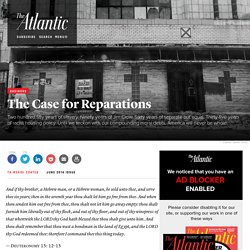
And when thou sendest him out free from thee, thou shalt not let him go away empty: thou shalt furnish him liberally out of thy flock, and out of thy floor, and out of thy winepress: of that wherewith the LORD thy God hath blessed thee thou shalt give unto him. And thou shalt remember that thou wast a bondman in the land of Egypt, and the LORD thy God redeemed thee: therefore I command thee this thing today. — Deuteronomy 15: 12–15. The Country of the Blind by H.G. Wells. Three hundred miles and more from Chimborazo, one hundred from the snows of Cotopaxi, in the wildest wastes of Ecuador's Andes, there lies that mysterious mountain valley, cut off from all the world of men, the Country of the Blind.
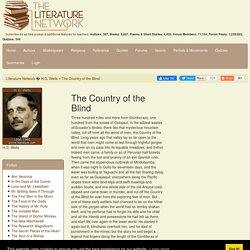
Long years ago that valley lay so far open to the world that men might come at last through frightful gorges and over an icy pass into its equable meadows, and thither indeed men came, a family or so of Peruvian half-breeds fleeing from the lust and tyranny of an evil Spanish ruler. The Other Side of Immigration. TEDxAldeburgh - Akala - Hip-Hop & Shakespeare? Home Is Where the Hatred Is. A family in its one-room flat in Chicago, date unknown. (AP) In "The Case for Reparations," I tried to move the lens away from the enslaved and focus on their descendants. Narratively, I thought it made a much more compelling read and I it got us past the "but they're all long-dead" argument.
Also, once you understand enslavement as central—not ancillary—to American history, you can then easily intuit that it would have some serious effects on policy 100 years later. When you then consider what directly followed enslavement—disenfranchisement, pogroms, land theft, terrorism, the entire suite of plunder—it seems inconceivable that 20th-century domestic policy would not be awash in white supremacy. On some vague level, I understood this to be true.
I thought of Jackson's book years later when I picked up Isabel Wilkerson;s The Warmth of Other Suns. Chicago is one of three cities that feature prominently in Warmth. Conot's book has been forgotten, and I don't really know why. 1.) 2.) 3.) Stanford History Education Group. X-Men, Batman, Superheroes and Hip Hop: A Match Made in Heaven. When I was in elementary school, my dream was to become a comic book artist. I would spend hours drawing my favorite Marvel or DC superheroes. My Superman had to virtually fly off the paper and my Wolverine wasn’t complete without his trademark scowl. Windows Without Prison Bars. When Paulo Demetrick, a 29-year-old federal prison inmate in Virginia, was asked, “If you could have a window in your cell, what place from your past would it look out to? ,” his mind began to race. After 11 years behind bars for robbery, how could he think of just one photograph? At first, he thought of his childhood, moments with friends and family.
But it didn’t feel like enough. He sat in his cell for five days obsessing over the image. “At Bestway I learned to mingle with and learn from people of all walks of life,” he wrote in his request. When Mr. The image still hangs on the bulletin board next to his bed.